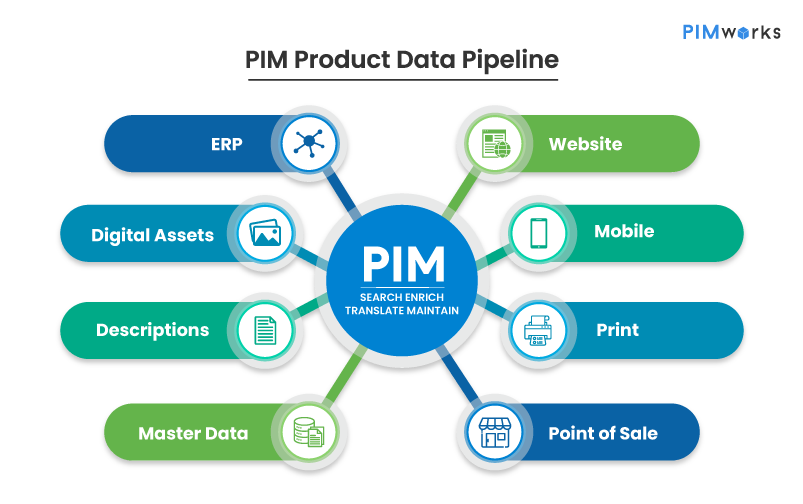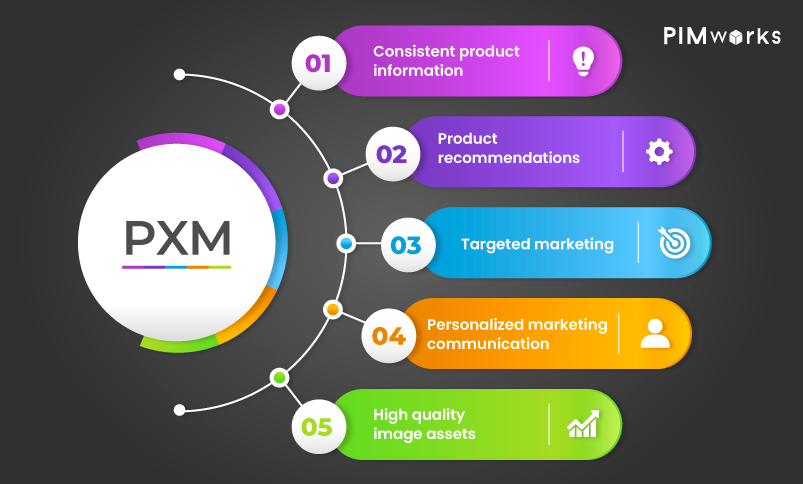The e-commerce world is always up for innovations to deliver the best customer experience. The accelerated growth in the industry and numerous players in the market are making it inevitable for companies to develop new strategies and innovations. Product Experience Management (PXM) and Product Information Management (PIM) are the most modern technologies businesses implement today. People often use these two terms interchangeably, but they have significant differences that will be covered in detail in this blog. Understanding these two practices’ differences is essential for businesses to identify the best solution for their challenges.
What is PIM?
Imagine managing a business offering an extensive range of apparel products, including shirts, trousers, dresses, and accessories. You have a sizable product inventory, and each item has different characteristics, like size, color, material, style, and price. You can employ a product information management (PIM) system to manage this product information. With the help of this system, you could store and manage all of the product-related data centrally.
PIM is a tool that helps organizations to manage and enrich product information to list their products on various platforms. It aids in storing, improving, and syndicating product information to e-commerce sites through automation. PIM processes ensure that the data they deliver is of the highest quality, accurate, enriched, and most updated. This process is inevitable for providing a superior product experience using credible product assets. PIM enables organizations to manage their product catalogs, update product data, and guarantee that customers get the correct information. Today, when consumers primarily rely on product information to make purchasing decisions, PIM is an essential tool.
The PIM system can enrich product information such as product description, price, image, visual assets, etc., to make sure that customers get the latest information on their hands. We can integrate PIM into almost all platforms, including websites, e-commerce, social media, and non-digital platforms. Product information management systems help organizations everywhere by lowering data errors and discrepancies, accelerating new product launches, and boosting the effectiveness of product data management.
PIM also accelerates the pace of new product introductions, which is another advantage. With PIM, organizations may increase their competitive advantage by rapidly adding new items, updating old catalogs, and launching them via various channels and scopes. All product data is often managed and maintained in a single database as part of PIM systems. Most departments engaged in product management, including marketing, sales, and e-commerce, have access to this database. This process makes accessing data at the right time easier for every responsible team. PIM systems also allow businesses to automatically add more information to product information, such as reviews, ratings, and product comparisons, which helps customers make wiser purchasing decisions.

What is PXM?
Imagine you are a sports goods manufacturer offering your wares through various platforms, including your website, online shops like Amazon and eBay, and physical storefronts. You must ensure that all product information and material is correct, consistent, and up to date across all channels to make your items stand out in the crowded market and provide your consumers with a seamless shopping experience. This is where PXM comes in.
Product experience management is an innovative technique to develop and maintain engaging product experiences. Unlike PIM tools, the main focus of product experience management is the entire journey of the consumer, from product discovery to purchase. PXM encompasses producing, optimizing, and disseminating product content through various channels, including social media, online markets, and e-commerce websites. They contain marketing automation, customer segmentation, and content handling capabilities to attract the right segment. They help businesses provide clients personalized product experiences based on their preferences and past purchase behavior.
PXM software helps organizations enhance the client experience, brand recognition, and sales revenue. It enables companies to design individualized product experiences that appeal to customers and foster brand loyalty.

Difference between PIM and PXM
The significant distinction between PIM and PXM is that the former concentrates on maintaining product data while the latter concentrates on developing engaging product experiences. The PIM system focuses on gathering and disseminating correct product information, whereas PXM is concerned with building solid customer relationships.
- Purpose- A product information management system manages and organizes product data across various channels and procedures, including product characteristics, descriptions, pricing, and inventories. Product experience management, on the other hand, aims to improve all aspects of the customer experience by offering suggestions, interactions, and tailored and exciting content.
- Data focus- While PXM focuses on utilizing that data to provide meaningful and pertinent customer experiences, PIM controls and maintains product data’s accuracy, completeness, and consistency.
- Features- PIM tools often feature data modeling, integration, and enrichment capabilities. They can streamline workflows, syndicate product data, and auto-enrich product assets. Conversely, PXM systems have customer segmentation, customization, digital asset management, and content management capabilities.
- Primary users- PIM systems are suitable for content experts, merchandisers, and product managers in charge of developing and maintaining product data. On the other hand, the marketing teams, digital experience professionals, and customer engagement managers who build and optimize customer experiences employ PXM platforms.
PIM and PXM, although they are fundamentally different, they coexist to deliver the best customer experience.
PIM Vs. PXM: Which one do you need?
Choosing the right solution between PIM and PXM can be challenging as both offer numerous features and benefits. PIM and PXM are essential for business as they complement each other with their advanced capabilities. PIM is the way to go if your company wants to maintain product data and guarantee accuracy and consistency across channels. On the other hand, PXM is the best way forward if your company focuses on developing compelling product experiences that engage customers and generate sales. Businesses must invest in PIM and PXM to give their customers the best experience possible.
PIMworks offers the best-in-class PIM and PXM solutions, which are helping big companies across the globe to optimize their online sales. Our customized solutions enable clients to find solutions catering to their needs and challenges. Talk to our experts to start your own PIM journey.

![Salsify VS Akeneo: An In-depth Comparison [2024] salsify vs akeneo](https://www.pimworks.io/blog/wp-content/uploads/2023/12/image-9-370x245.png)